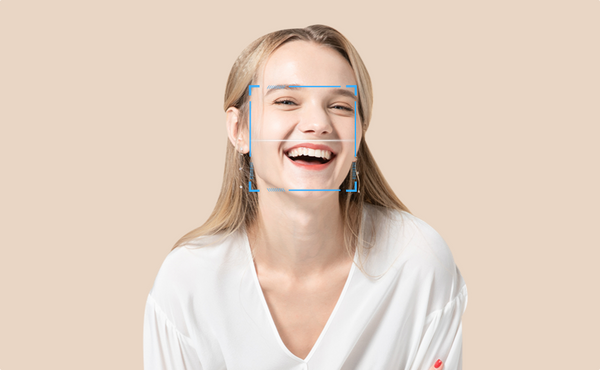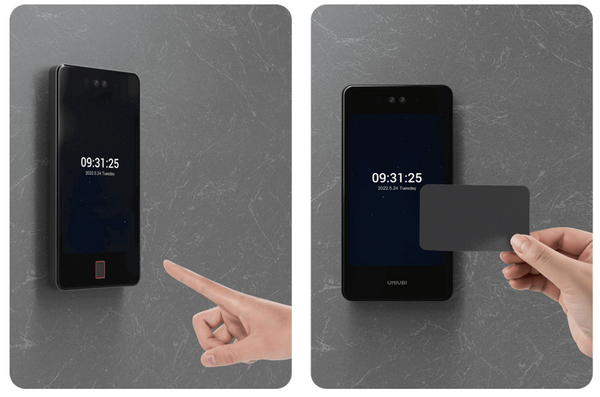
The Pros and Cons of Contactless Workforce ID Cards vs. Biometric Methods
Contactless Workforce ID Cards

Contactless workforce ID cards, also known as proximity cards or smart cards, have gained popularity in recent years. These cards use embedded RFID (Radio Frequency Identification) or NFC (Near Field Communication) technology to transmit data wirelessly.
Here are the advantages and disadvantages of using contactless ID cards:
Pros:
1. Convenience and Accessibility: Employees can simply tap or swipe their cards to record attendance, eliminating the need for manual timekeeping methods. This reduces administrative burdens and streamlines processes.
2. Cost-Effectiveness: Implementing contactless ID card systems is often more affordable compared to biometric alternatives, as it requires fewer infrastructure investments.
3. Versatility: Contactless ID cards can be used for various applications beyond time and attendance, such as access control, cashless payment, and tracking employees' movement within a facility.
Cons:
1. Potential for Loss or Theft: As contactless ID cards are physical objects, they can be misplaced, lost, or stolen. If not promptly reported, unauthorized individuals might gain access to restricted areas.
2. Lack of Uniqueness: Since contactless ID cards can be shared or used by someone other than the authorized employee, there is a potential for identity fraud or buddy punching (when one employee clocks in for another).
3. Wear and Tear: Over time, contactless ID cards can wear out, leading to reduced functionality or failure to work altogether. This necessitates periodic card replacement, incurring additional costs.
Biometric Methods

Biometric methods utilize unique physiological or behavioral characteristics to identify individuals. Common examples include fingerprint scanning, facial recognition, and iris scanning.
Let's explore the pros and cons of biometric methods:
Pros:
1. Enhanced Security: Biometric identifiers are difficult to forge or duplicate, significantly reducing the risks of identity theft or fraudulent activity.
2. Accuracy and Reliability: Biometric systems provide a high level of accuracy and reliability, ensuring precise identification and eliminating errors caused by manual data entry or card swapping.
3. Elimination of Lost or Stolen Cards: With biometric methods, there is no need for physical cards, eliminating the risk of loss or theft.
Cons:
1. Higher Implementation Costs: Biometric systems typically require more significant upfront investments in hardware, software, and infrastructure, making them less accessible for smaller organizations.
2. Privacy Concerns: Collecting and storing biometric data raises privacy concerns, and organizations must ensure compliance with relevant data protection regulations.
3. Environmental Factors: Biometric systems may be affected by external factors such as changes in lighting conditions, injuries to the biometric feature, or the presence of dirt or sweat, potentially leading to authentication failures.
Support for Both Contactless ID Cards and Biometric Methods
BundyPlus terminals provide a versatile solution that supports both contactless ID cards and biometric methods, offering organizations the flexibility to choose the most suitable option for their specific needs. This compatibility ensures that companies can transition smoothly between different identification methods, taking into account factors such as workforce size, security requirements, and budget constraints.

Seamless Integration with Payroll Software
Regardless of the identification method chosen, BundyPlus technology seamlessly integrates with popular payroll software like MYOB, XERO, Fusion5 and 25+ others. This integration simplifies the process of transferring attendance data from BundyPlus terminals to the payroll software, reducing manual data entry errors and saving time for HR personnel.
Conclusion
Selecting the right workforce identification method is crucial for effective time and attendance management. While contactless ID cards offer convenience and cost-effectiveness, biometric methods provide enhanced security and accuracy. The BundyPlus terminals provide organizations with the ability to utilize both options, ensuring flexibility and adaptability. Additionally, BundyPlus seamlessly integrates with popular payroll software, further streamlining workforce management processes.
To optimize your workforce management strategy, book a FREE Workforce Strategy meeting today and unlock the full potential of BundyPlus technology.
